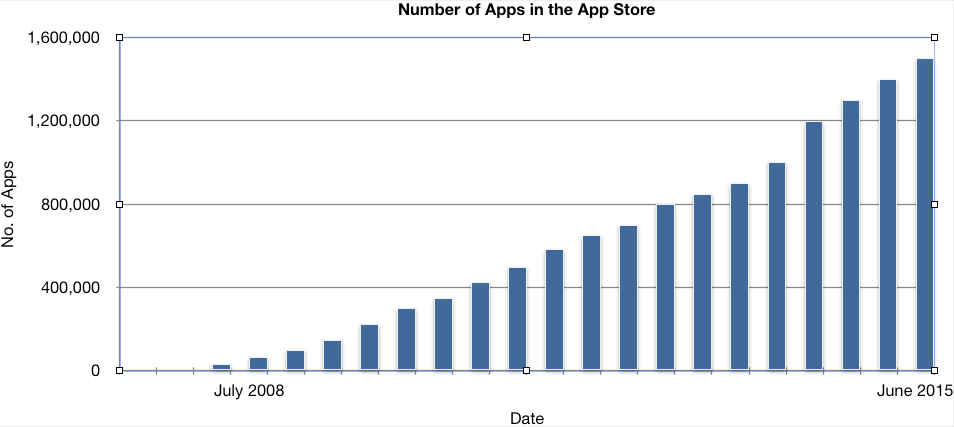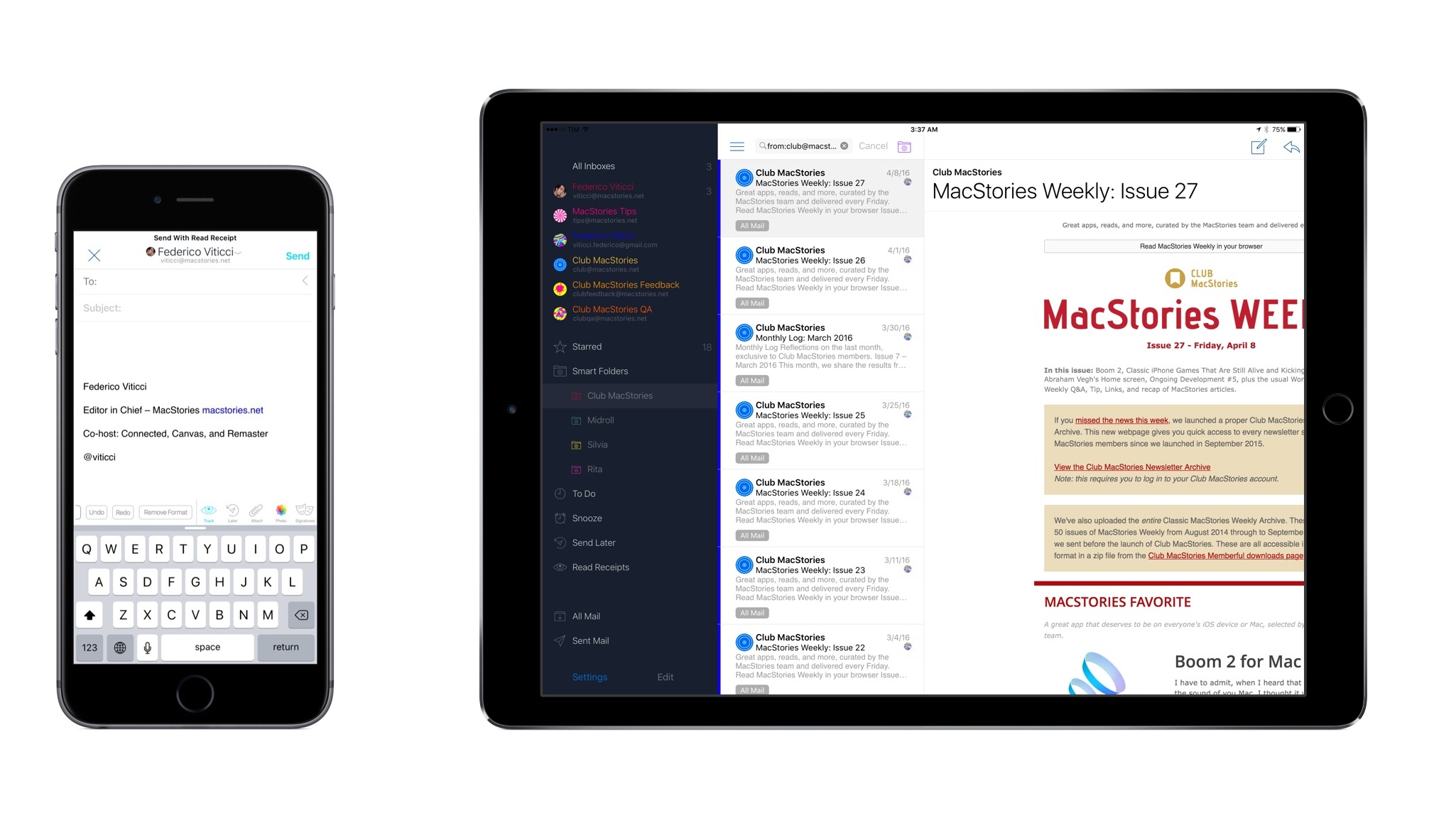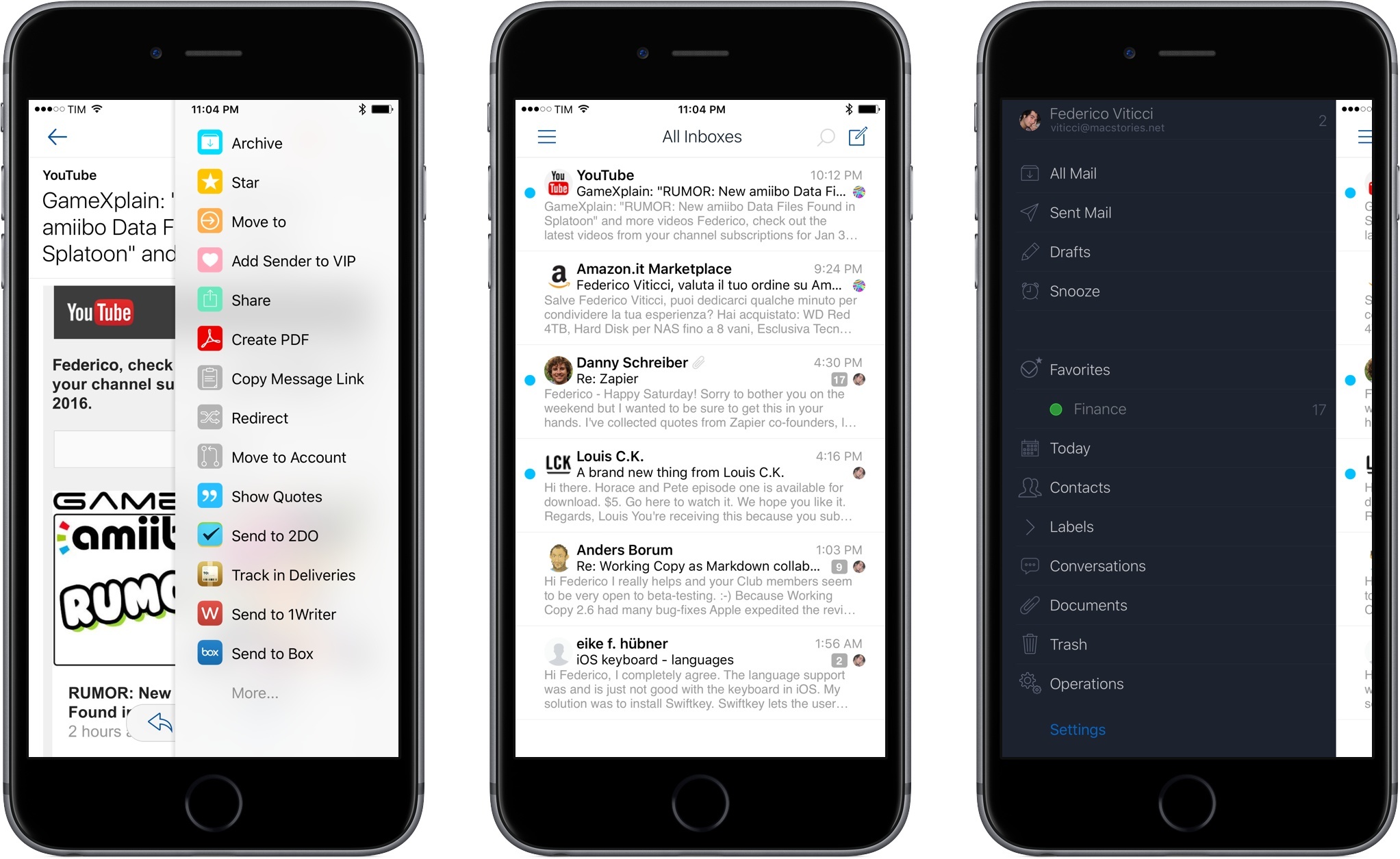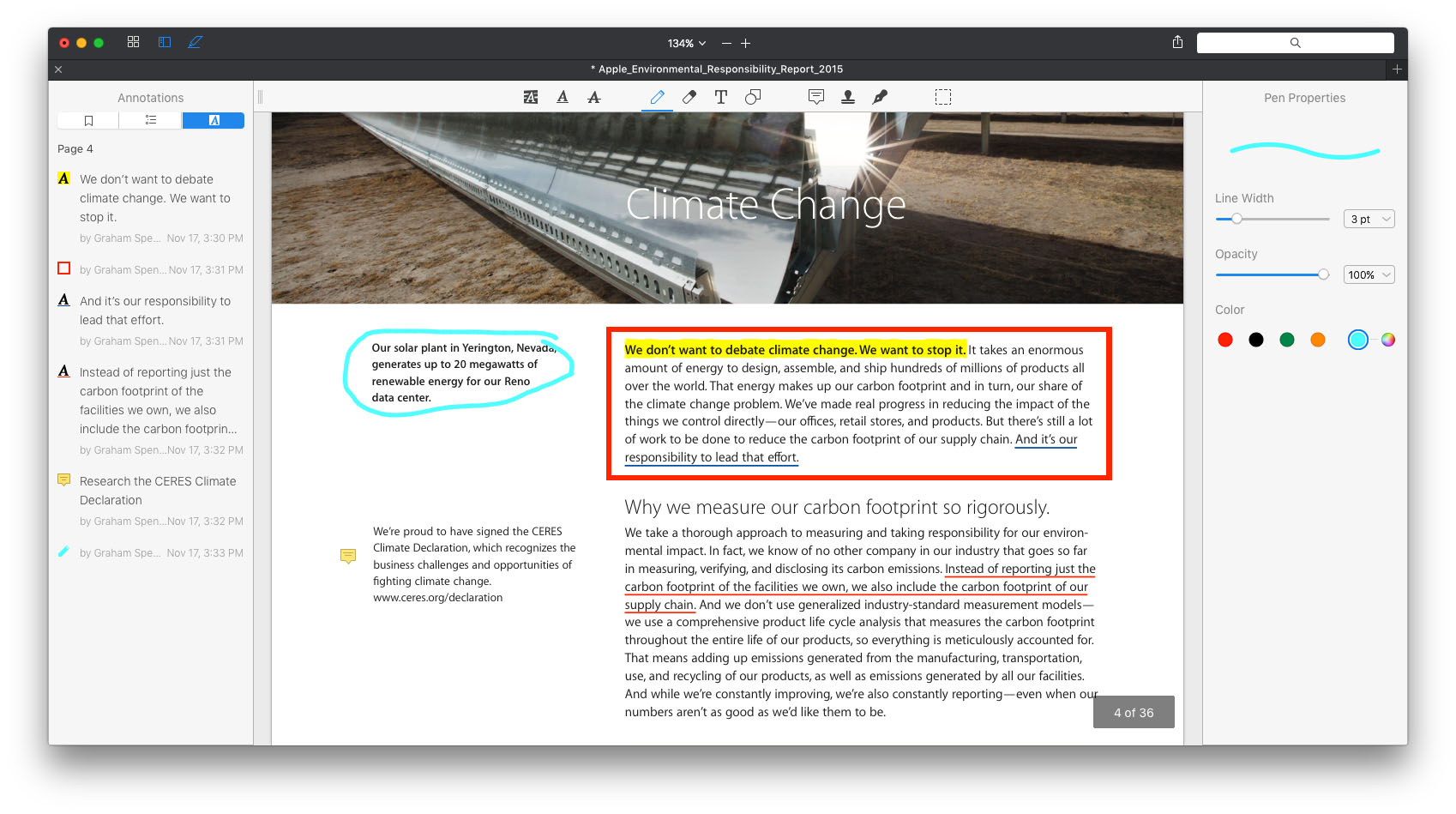Cultured Code, makers of Things for iOS and macOS, today released Mail to Things, a feature that enables Things users to save new tasks directly into the app’s inbox through a dedicated Things Cloud email address.
Search results for "Spark Readdle"
Cultured Code Releases ‘Mail to Things’
#MacStoriesDeals Black Friday 2017: The Best Deals for iPhone & iPad Apps, Games, and Accessories
Every year, thousands of iOS and macOS app deals are launched for Black Friday and Cyber Monday. At MacStories, we handpick the best deals for iOS and Mac apps and collect them in a single roundup with links to buy or share discounted products directly. You don’t have to be overwhelmed by app deals; we take care of finding the best ones for you.
This year, in addition to app deals, we’re expanding our Amazon coverage with deals on accessories that work with Alexa, HomeKit devices, 4K TVs (great for modern gaming and the latest Apple TV), and more. You can find hardware deals (with links to Amazon.com) at the end of the list.
Bookmark this post and come back to find updated deals starting today through Monday. Updates will be listed as new entries at the top of each section; iOS apps are organized in sub-categories for easier navigation.
For real-time updates, you can find us as @MacStoriesDeals on Twitter.
iOS 11: The MacStories Review

For the second time in three years, the iPad isn’t following in the iPhone’s footsteps. With iOS 11, the iPad is going in its own direction – this time, with no cliffhanger.
iOS 9 marked a significant milestone for the iPad platform. In contrast with previous iPhone interface adaptations, iOS 9 did away with longstanding preconceptions and allowed the iPad to reach beyond the comfort of familiarity with the iPhone’s experience.
Shedding the vestiges of intrinsic iPhone OS notions – namely, single-tasking through one app at a time – the combination of more capable hardware with features such as Split View and Picture in Picture inaugurated a new beginning for the iPad’s post-PC endeavors. iOS 9 reset the iPad’s expectations and potential, providing millions of disenchanted users with the modern, powerful PC replacement they’d been envisioning since 2010.
But in many ways, iOS 9 wasn’t enough. The productivity enhancements that set the iPad on a new course felt, in hindsight, like first attempts at reviving its software and app ecosystem. Key aspects of iOS 9 were evidently unfinished, possibly hinting at future optimizations and fixes.
That future didn’t arrive with last year’s iOS 10, which only added to the sense of wondering when the iPad’s next shoe would drop. Amidst consistently declining unit sales and following another bland (at least iPad-wise) mid-cycle update to iOS, the legacy of iOS 9 gradually shifted from a first step packed with promise to a bittersweet one-off effort to infuse new life into the iPad.
With iOS 11, Apple’s iPad vision feels resolute again. Multitasking is blending with multitouch, giving drag and drop a new purpose; the Mac’s best features – from file management to the dock – have been rethought, simplified, and extended specifically for iOS. The iPad’s mission is to reimagine the very concept of a portable computer by empowering a new generation of users to do their best work wherever they are, whenever they want.
If anything, iOS 9 was merely the iPad’s overture.
The iPad, however, is only one part of the broader iOS story, which has been – and most likely always will be – characterized by the iPhone’s evolution and impact on our society.
From that standpoint, not only did iOS 10 deliver with upgrades to core iPhone apps such as Photos, Messages, Music, and Maps – it showed how Apple was judiciously planting the seeds for technologies and human interface guidelines that are blossoming in iOS 11. The two-pronged approach of iOS 10 – updates to consumer apps along with the first signs of native iOS machine learning – resulted in an iPhone update that felt impactful without the need for a ground-up redesign.
For the most part, iOS 11 follows the playbook of last year. The transition to a new design language is still in flux, with a progressive remodeling of iOS 7’s divisive aesthetic and the adoption of friendly UI elements that can guide users across the system. iOS 11’s most notable redesigns, including the App Store and Control Center, lay new foundations and fix what didn’t work before. Refinements – in some cases, reversals of ideas that didn’t pan out – are one of iOS 11’s overarching themes.
iOS 11 also reaps the rewards of investments Apple made in iOS 10 and 2016’s iPhone line. From the upcoming wave of augmented reality apps to deeper computational photography and new responsibilities for iCloud, iOS 11 epitomizes – with remarkable accomplishments and a few missteps along the way – the focus and priorities of the modern Apple.
But perhaps more importantly, unlike iOS 10, iOS 11 presents a cohesive narrative for both the iPad and iPhone. A story where, for the first time in years, the iPad is informing some of the design principles and features of the iPhone’s software. Even from different angles, and each with its own past struggles, both acts in iOS 11 end up asking the same question:
Where does the modern computer go next?
A Computer for Everything: One Year of iPad Pro

I wasn’t sure I needed a 12.9-inch iPad when Apple announced the iPad Pro in September 2015. And yet, over a year later, the iPad Pro is, by far, the best computer I’ve ever owned. I’ve never felt so satisfied with any other Apple device before – but the transition wasn’t easy.
After years spent adapting what I learned from the Mac to bring it to iOS, what I found on the other side was a more focused, efficient way of working and communicating with people. The iPad Pro accelerated my move to an iOS-only setup; today, I genuinely don’t know how to perform certain tasks on a Mac anymore.
I use my iPad Pro for everything. It’s my writing machine and favorite research tool, but I also rely on it to organize my finances, play games, read books and watch movies, program in Python and Workflow, and manage two successful businesses. While I’ve been advocating for such multi-purpose use of the iPad platform for a while, the iPad Pro elevated the threshold of possibilities, reaching an inflection point that has pushed others to switch to an iPad as their primary computer as well.
Much of the iPad’s strength lies in iOS and its app ecosystem. If Apple were to stop making iPads, I’d still prefer to work on a device that runs iOS rather than macOS. iOS is where app innovation happens on a regular basis with developers one-upping each other in terms of what software can achieve; I also prefer the structure and interactions of iOS itself. The iPad Pro is the purest representation of iOS: it’s a computer that can transform into anything you need it to be.
Even if this discussion was settled a long time ago, it bears repeating: millions of people today like working on iOS more than they do on macOS, and the iPad Pro is the best machine to run iOS. There is no sarcastic subtext about the Mac here, which is still a fantastic environment that many Apple users love and need for their line of work. The Mac and the iPad can coexist in a market where customers believe one is superior to the other. I prefer working on the iPad; others like their Macs more. And that’s fine because, ultimately, the Apple ecosystem as a whole grows stronger and we all reap the benefits.
Over the past year of daily iPad Pro usage, I’ve made it my personal goal to optimize my iPad workflows as much as possible. This is one of the best aspects of the iOS platform: competition between developers is fierce and you can always choose between different apps to get work done – apps that are improved on a regular basis and are constantly updated for the latest iOS technologies. With enough curiosity and patience, iOS rewards you with the discovery of new ways to work and save time.
Since my last iPad story in February, I’ve taken a hard look at my entire iPad setup and rethought the parts that weren’t working. I tried new apps, created new automations, and optimized every weak spot I could find. I improved how I collaborate with my teammates and produce weekly content for Club MacStories members. Thanks to the time I invested in understanding and fine-tuning my iPad Pro, I was able to embark on more projects, double MacStories’ growth, and manage a larger team.
As a result, my iPad Pro today is noticeably more capable than it was a year ago – all without the need for a hardware refresh.
Here’s what I’ve done.
#MacStoriesDeals Black Friday & Cyber Monday 2016: The Best Deals for iOS and Mac Apps & Games
Every year, thousands of iOS and macOS app deals are launched for Black Friday and Cyber Monday. At MacStories, we handpick the best deals for iOS and Mac apps and collect them in a single roundup with links to buy or share discounted products directly. You don’t have to be overwhelmed by app deals; we take care of finding the best ones for you.
Bookmark this post and come back to find updated deals starting today through Monday. Updates will be listed as new entries at the top of each section; iOS apps are organized in sub-categories for easier navigation.
For real-time updates, you can find us as @MacStoriesDeals on Twitter.
“Where’s the App for That?” – Fixing App Store Discovery
When the iPhone debuted in 2007, it was by no means a forgone conclusion that there would ever be an App Store. Steve Jobs reportedly resisted the idea over concerns that it would ‘mess up’ the iPhone,1 yet about one year later, the App Store debuted with around 500 third-party apps.
The App Store grew like wildfire. By January 2009, there were about 15,000 apps. Though modest by today’s standards, 15,000 was already enough apps that it felt like there was one to fulfill every possible need you might have. Apple celebrated the success of the App Store the next month by launching a TV ad campaign featuring the catchphrase ‘There’s an app for that.’
Fast-forward to today and the scope of the App Store of 2009 feels quaint by comparison. There are now approximately 1.5 million apps in the App Store – a 100-fold increase in just seven years. But while the App Store has been an undeniable success for Apple by almost any measure, that success has come at a cost. With so many apps in the App Store, discovery has become such a serious problem that today’s version of Apple’s 2009 catchphrase may as well be ‘Where’s the app for that?’
The good news is that change is afoot in the App Store. Last December, Phil Schiller took over responsibility for the App Store. In April, Apple launched a site dedicated to helping developers build their businesses, which includes a way for developers to contact the App Store team directly about promoting their apps. In mid-May, app review times dropped dramatically, from around a week to under two days, instantly changing the launch cycle for developers. Then, just in the last week or two, Apple quietly started hiding Apple TV apps from its Featured pages and top charts that customers have already downloaded, making room to display more new apps.
According to rumors Apple has about 100 people working on changes to the App Store. With WWDC just around the corner, I’ve been spending a lot of time thinking about how Apple could improve App Store discovery and gathering ideas from other developers. I’m optimistic that meaningful progress can be made to make developers’ apps more discoverable, but these are hard problems. There is no silver bullet that will improve discovery overnight – it’s a problem that needs to be attacked on multiple fronts simultaneously.
With Version 1.1 and an iPad App, I’m Switching to Airmail
When I first covered Airmail for iPhone, I noted how the vision of an email client for power users on iOS was only halfway there due to the lack of an iPad app and a variety of glitches and technical issues. Airmail showed that it was possible to build an email app for power users on mobile devices – asking for a fair price in the process – but I couldn’t switch to it as my full-time client yet.
That’s changing with today’s update to Airmail for iOS, which I’ve been using as my only email client on the iPhone and iPad for the past several weeks. In addition to an iPad app – which mostly follows in the footsteps of its iPhone counterpart in terms of UI and navigation choices – Airmail 1.1 brings powerful new features such as saved searches, customizable keyboard shortcuts, support for send later and read receipts, and more.
While the majority of “modern” email clients are focused on reinventing email with new display options for the inbox and novel interfaces, Airmail wants to redefine how much control you’re given over your email on iOS. Which is to say – Airmail is the most powerful email app for iOS out there right now, treating iPhone and iPad users with the same respect and attention other developers would only show for their Mac apps.
Airmail for iPhone Review: Power User Email
If you want to drive an average tech nerd crazy, try to talk about email clients.
Over the course of (almost) seven years of writing for MacStories, I’ve seen email pronounced dead (multiple times), reinvented, redesigned, and, most recently, made smarter with machine learning and cloud services. Email has been deemed unfixable, unmanageable, and unhealthy. And yet, for better or worse, we keep using it.
Despite its archaic nature and stale protocols, email works – it’s the closest thing to a common standard for digital communication we have. Messaging services may rise and grow and fall and shut down, but email will always be there, humbly humming along, hoarding thousands of unread messages in your inbox. You have to believe that, if this planet were to end tomorrow, cockroaches and IMAP would survive it.
I have written my fair share of email client reviews since 2009, and I’ve made my stance on what I’m looking for abundantly clear. I like my email client to bear the speed and polish of Microsoft’s Outlook, the clever touches and integrations of Dispatch, and, if possible, the smart options of Inbox and Spark. The fact that, eight years into the App Store, I’m still cherry-picking my ideal set of features for an email client says a lot about the landscape. Every time a new email client is released, you will find users who are perfectly content with it, others who prefer the built-in app on their devices, and some who are intrigued, but still unhappily waiting for the email client of their dreams to be made.
In case you’re wondering, I’m that guy in the last group, assembling yet another email client review, making a list of ideal email features for an iOS app.
And I actually love it, because the past 12 months have brought a ton of interesting changes in the email market for iPhone and iPad. Perhaps most notably, Microsoft surprised iOS users with a solid client, evolved from an acquisition and quickly improved to accommodate fast search and notifications, calendar integration, and full iOS 9 support. Outlook – a runner-up to my App of the Year in 2015 – is the email app I recommend to anyone who wants to try something different than Mail. Spark, launched by Readdle last year, has received a series of improvements with the promise of future Mac and iPad versions. The power-user oriented Dispatch has also continued to grow, with an eye for iPad users adopting iOS 9. And, reinvigorated by the demise of Mailbox, dozens of other developers have tried (or have kept trying) their hand at improving email on iOS. There was a time when Apple didn’t even accept third-party email clients on the App Store; today, you can find hundreds of similar and drastically different takes on email on the Store.
Developed by Italian indie studio Bloop, Airmail was first released on OS X in early 2013, capitalizing on the shutdown of Sparrow with a design reminiscent of that popular client acquired by Google (which, in turn, borrowed heavily from Loren Brichter’s Tweetie, the grandfather of those kinds of interfaces). Through the years, Airmail has become one of the most powerful email apps for the Mac, with support for multiple accounts, keyboard shortcuts, and a long list of preferences to tweak the app to your needs. Airmail is up there with MailMate in the club of desktop email clients that allow you to configure and fiddle with settings to make email as welcoming as it could possibly be.
Bloop is hoping to replicate its desktop success with Airmail for iPhone, launching today on the App Store at $4.99. I’ve been trying Airmail for the past couple of months, and it brings some unique features and options to the table, but, as usual, the road ahead is going to be long.
PDF Expert for Mac: A Better Preview for PDFs
PDF Expert has been an indispensable app for my iPad for almost as long as I can remember (I’m fairly certain it was one of the first apps I bought when I got my iPad). It’s a fantastic app on iOS because it enables me to not only read, annotate, and add comments to PDFs, but it also gives me a cloud-based ‘Finder’ of sorts – enabling me to browse my Dropbox and OneDrive files and sync them to my iPad.
Given my longstanding appreciation for Readdle’s PDF Expert on iOS, I was pretty keen to try out the Mac version of PDF Expert, which launched late last week. But it must be said, I was sceptical of the value it would bring to the table, because unlike iOS, OS X has the Finder, and cloud services like Dropbox and OneDrive already sync files locally. But most significantly, Preview on the Mac is a fantastic Swiss Army knife for viewing documents and already does a pretty great job at viewing PDF documents, annotating them, adding comments, and even performing some basic page re-organization functions.
But despite my scepticism I was pleased to discover that for those of you who deal with PDFs regularly (myself included), you’ll find value in what Readdle has developed in PDF Expert. Rather than a traditional, wide-ranging, review, I’ve decided to focus on three key features which make PDF Expert worth the money – features that ultimately convinced me to turn my free trial into a purchase.








